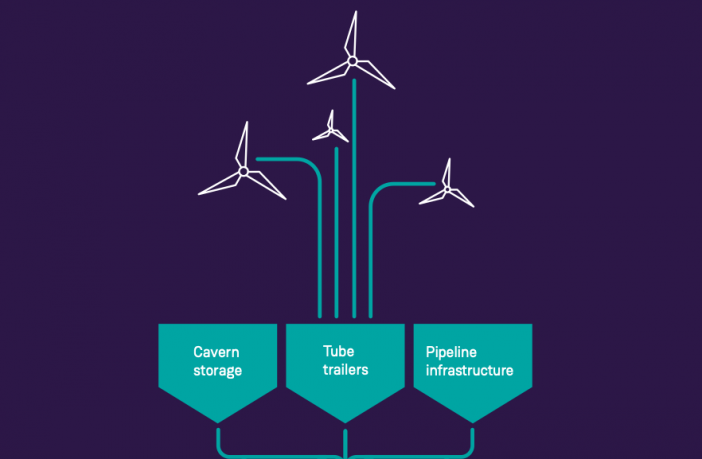- Unlocking the Green Hydrogen Revolution, a new whitepaper from Siemens Gamesa, sets out a roadmap to drive down the cost of green hydrogen production within the next decade.
- Green hydrogen price parity with fossil-based hydrogen is achievable from onshore wind by 2030 and offshore wind by 2035 with appropriate policy frameworks and market mechanisms in place.
- The paper outlines the path needed to ensure that green hydrogen becomes a mainstream energy source.
Green hydrogen generated from wind energy has the potential to be the long-awaited, climate-friendly solution for these industries but, for this to become a reality, it needs to be produced cost-effectively and at industrial scale soon according to Siemens Gamesa.
They call for a joined-up approach to encouraging both market demand and scaling production, highlighting four key requirements to deliver low-cost green hydrogen within the next decade:
1. Increase drastically the capacity of renewables because the green hydrogen revolution relies on this. The world needs up to 6,000 GW of new installed renewable energy capacity by 2050, up from 2,800 GW today to generate the expected demand for hydrogen (500 million tonnes, according to the Hydrogen Council).
2. Create a cost-effective demand-side market for green hydrogen to drive down the costs of equipment, infrastructure and day-to-day operating costs. Currently, the main operating cost for green hydrogen production is powering the electrolyzers, so a decrease in energy costs lowers the cost of the hydrogen and increases demand.
3. Develop the supply chain as no one provider can own the entire production and distribution process. At the moment, initiatives are fragmented, and therefore costly, meaning renewable energy companies, electrolyzer manufacturers, network providers and water treatment specialists need to work together to build a resilient supply chain.
4. Build the right infrastructure in terms of logistics, storage and distribution. There needs to be investment in hydrogen pipeline networks to unlock the potential of green hydrogen.
Andreas Nauen, Siemens Gamesa CEO, said, “When it comes to green hydrogen, we need to act now. It took three decades for wind and solar to reach grid parity with fossil fuels, and we cannot afford to wait that long for green hydrogen to reach price parity with fossil-based hydrogen. Wind will play a powerful role in accelerating the production of green hydrogen, which is vital to decarbonizing our economy. Therefore, to unlock the potential of green hydrogen, we need to drive down costs quickly. To do this, we need a consensus between industry, policymakers and investors to rapidly develop the demand-side market, build the supply chain and roll out the necessary infrastructure.”
Link to white paper HERE
Author: Bryan Groenendaal















